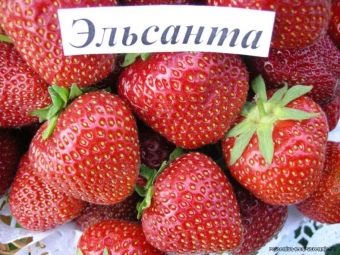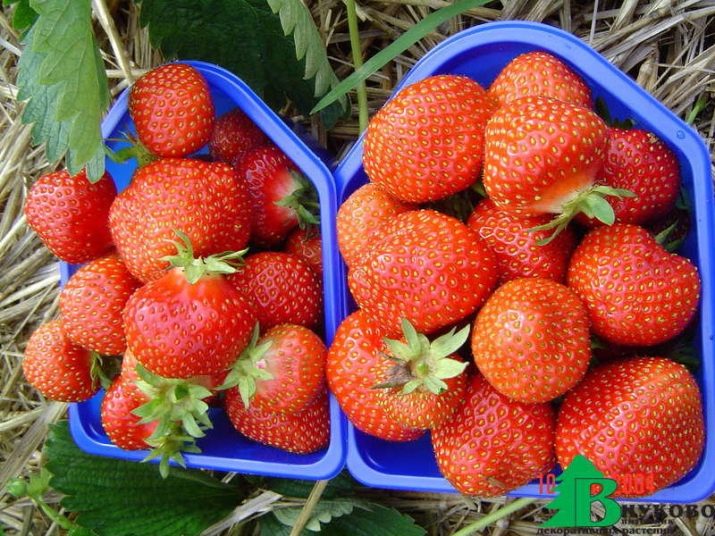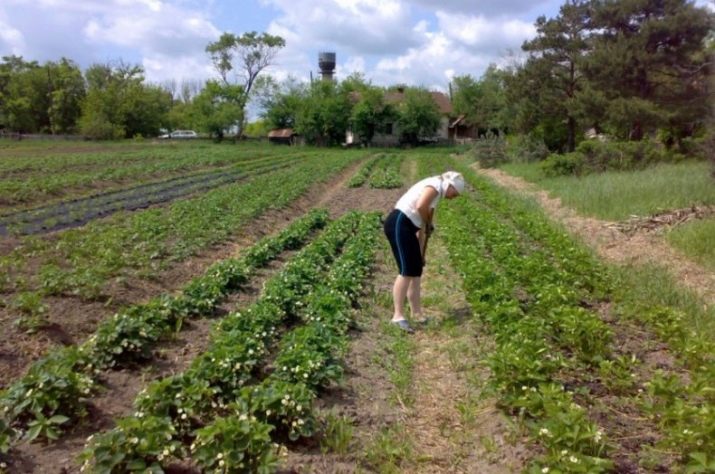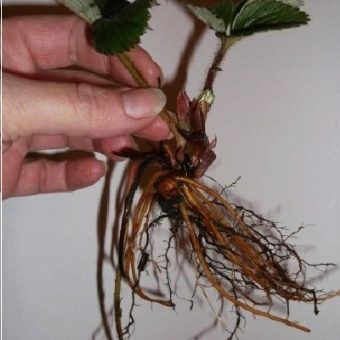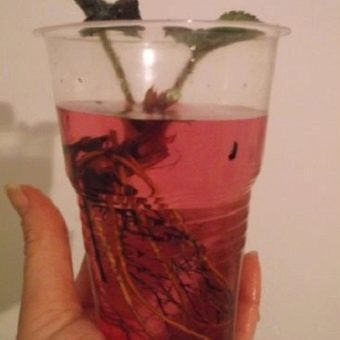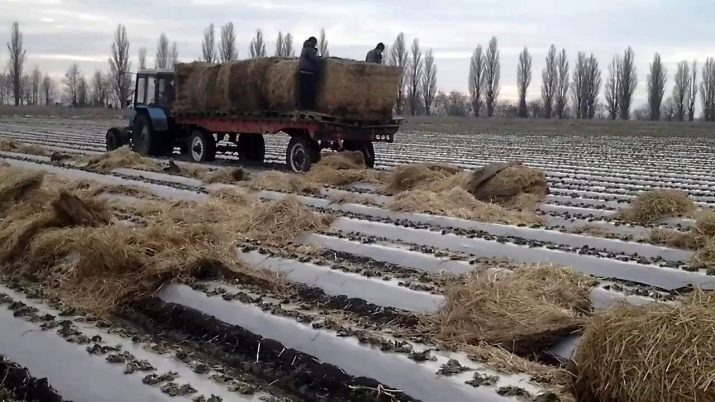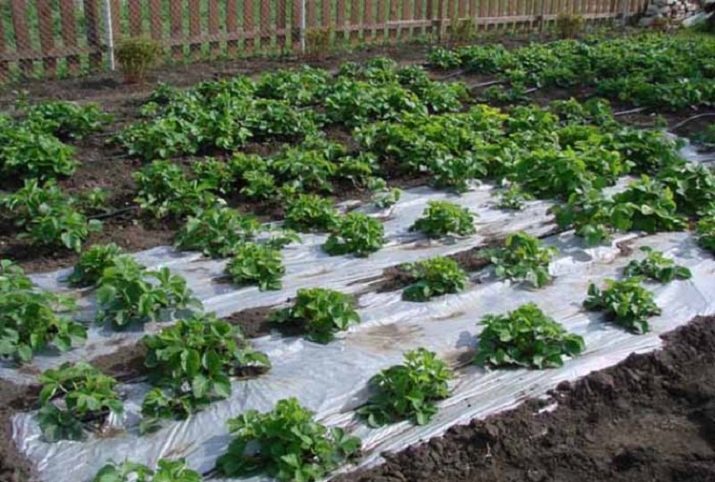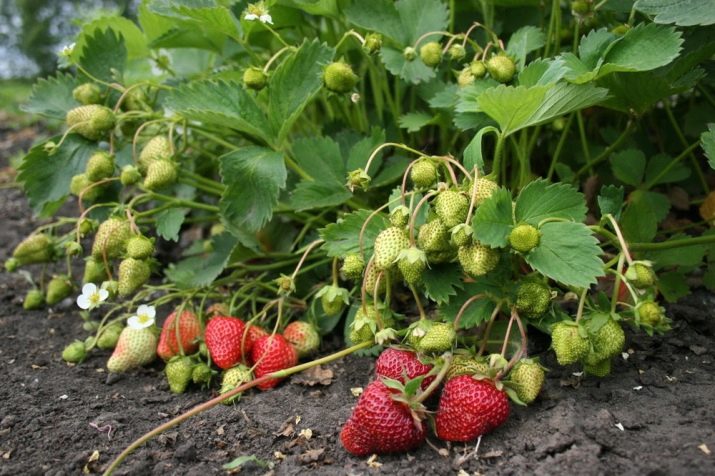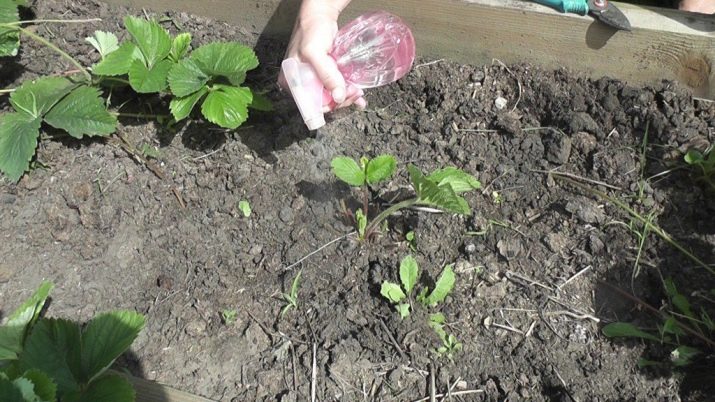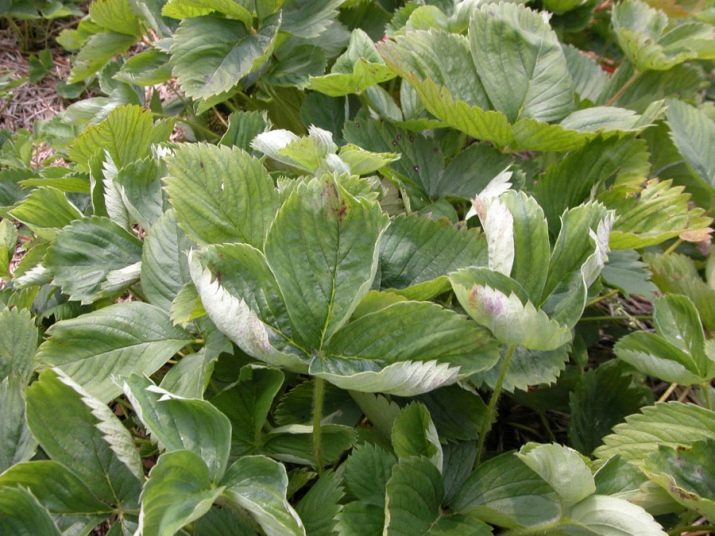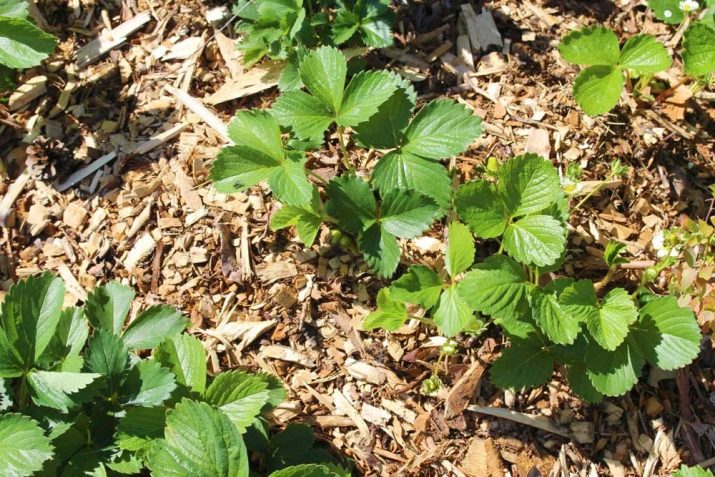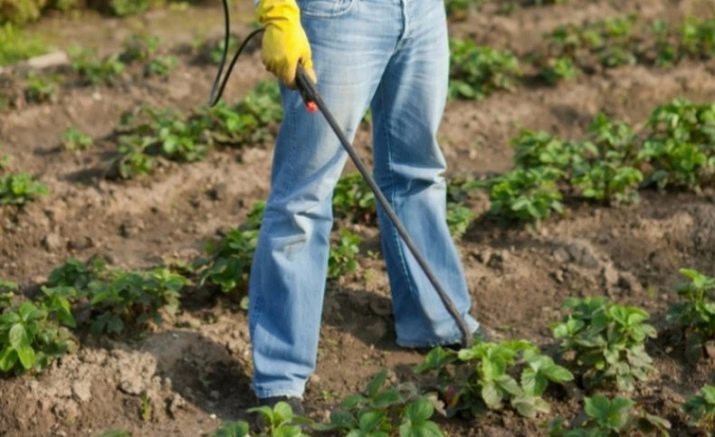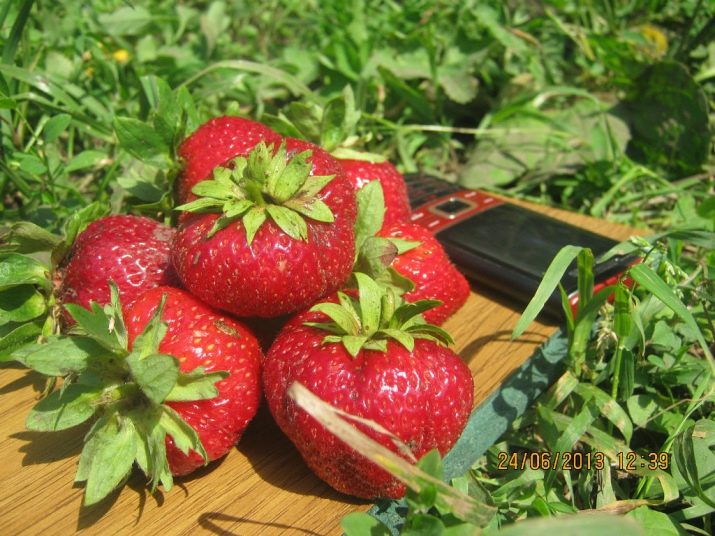Strawberry "Wima Zanta": description of the variety and agricultural technology
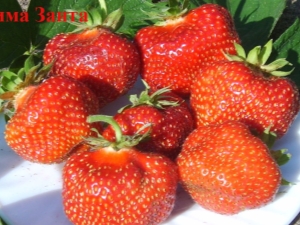
Every gardener wants to indulge himself and his family in the beginning of summer with fresh fragrant strawberries, which also strengthens immunity due to the vitamin C contained in it.But because of the capriciousness of culture, this is not always possible, and there are many reasons for this. Relatively recently, a fairly robust variety, called Vima Zanta, was bred by foreign breeders. This is a Dutch hybrid, derived from the well-established hybrids "Elsanta" and "Crown", which are akin to the Wim Tarda variety that is popular in certain circles. Perhaps this is due to the resistance of the variety.
Variety description
Strawberry "Vima Zanta", having a rich taste and aroma of juicy, sweet berries, is considered to be garden strawberries. It resembles strawberries and the shape of small berries, resembling a cone. And in young bushes they are more round. Juiciness largely depends on irrigation: moderately abundant - a guarantee of sufficient juiciness, and because of its lack of fruit, the berry can become hollow.
If we talk about the characteristic of the variety, then first of all it is necessary to note its certain frost resistance. This culture is not afraid of the relatively low winter temperatures of the Central and North-Western regions of Russia, which eliminates the hassle associated with shelter for the winter.
She also has a rather strong and lush bush that does not allow herself to be drowned by weeds or to be broken by the winds. A characteristic and distinctive feature of the bush are the leaves twisted to the bottom, resembling a boat.
Flowers, and later the berries are formed at the level of foliage, which practically excludes the probability of their decay from moist soil.
It should be noted that this variety, including its root system, is resistant to rot in any of its manifestations. The exception is powdery mildew, since only it can most often harm the crop.
Intensive mustache growth promotes rapid reproduction. What is a definite plus for transplantation, since the division of the bush is not required, which undoubtedly injures the root system.
As for ripening terms, Wima Zanta is a medium early variety (end of May, beginning of June). The yield is high, which makes it possible to gather from 70 to 80 centners of berries from one hectare, but such maximum figures can be achieved a year after planting.
Landing
When purchasing Vima Zanta, it is necessary to study the characteristics of planting, since it is on them that the good yield depends. The first thing a plant needs is a lot of free space, so given the rapid growth of the whiskers, we leave a distance of half a meter between the rows on the bed, and the bushes are 25-30 centimeters apart. Otherwise, fast-growing bushes will begin to drown out each other, which will lead to a complete loss of the crop.
The bed itself must be located on the sunny side. Do not be afraid that the scorching sun will ruin the berries, on the contrary, thanks to him, they will spawn faster, and the shrubs will not care, as it is expected that it will be provided with daily abundant watering, which has a beneficial effect on the taste of berries.
But the shadow affects the appearance and taste of berries.
As for the soil, it should be as fertilized as possible. Without treating it with the necessary plant minerals and organic matter, you can not count on a good harvest, because even a shrub is not properly formed. Top dressing is carried out, as always, in stages, not counting the traditional autumn feeding.
During the direct landing, the mineral fertilizer is placed in the formed well. The next enrichment, in order to strengthen the culture, must be planned before the formation of the ovary. And the third time they feed strawberries for the winter, this is done after a full harvest.
Particular attention should be paid to purchased seedlings, as they may contain various pests (for example, spider mites). For prophylaxis, it is recommended to hold them before planting in a weak solution of potassium permanganate, which should be warm for about half an hour.
In addition, such prevention can prevent the emergence of many diseases in the process of growing.
Care
Care of this variety consists of three main components. A prerequisite for good growth, as noted above, is the need for proper watering. But the appeared flowers do not like moisture, so with their appearance we carry it out in large areas through irrigation, and small beds can be watered with a watering can without a nozzle directly below the root.
Strong shrubs of a variety, in principle, cannot be destroyed by a weed, but the weed makes them scarce, absorbing nutrients from the soil. Thus, the plant needs regular weeding, during which you can not be afraid to break the root system of strawberries, as it is quite quickly restored.
For lovers of early harvest it is necessary in the autumn-winter period to provide the culture with proper warmth. After autumn feeding, having endured a certain time for mastering, it is important to cover strawberries before the onset of freezing.
A good option would be mulch, made from dry hay or grass, combined with sawdust.
If winter is frosty and not snowy, then it is advisable to lay agrofibre or warm rags over the mulch (jackets, old fur coats, and so on). With the onset of heat, the plant can be opened, but to get an early harvest for the night, the strawberries will still have to be hidden, that is, to cover all with the same mulch or rags.
If your growth has reached a certain height, and the rags can break it, then experienced gardeners recommend covering it with a light film, cutting holes for each bush. This method allows the young bush to receive the sun's heat, and the roots to be in steamed, moist and warm soil.
As for the removal of whiskers, they are removed partially, so that the bush is not weak.
But for breeding on the strongest bushes, they still leave about two whiskers. After the appearance of the required number of shoots, it is recommended to remove the extra shoots, especially if they are located close to each other. To delete, select the weakest shoots.
In continuation of the topic of removal, it should be noted that a year after disembarking it is recommended to remove the entire ovary of a young bush. The procedure will help to strengthen the strawberry, which is not yet ready for fruiting, and the next year, the strengthened plant will allow more than 1.5 kilograms of berries to be harvested from one bush.
Diseases and pests
Vima Zanta is a variety that can cope on its own with many diseases caused by rot, because it is immune to them. The exception is powdery mildew, which usually appears when watering excessively during rainy summer. The moisture obtained in excess does not have time to be consumed and evaporated, but, stagnating, it becomes the cause of the appearance of powdery mildew, manifesting itself as gray spots on the sheet plates.
It is well known that the disease is easier to prevent than to cure.therefore it is recommended to coordinate watering with weather conditions. And to prevent the disease, you can strengthen the strawberries with an aqueous solution of greens, which is prepared at the rate of one drop per liter of water. In addition, brilliant green, unlike other drugs, contributes to the development of immunity in plants.
The procedure is carried out only through irrigation, since the concentrate, hitting a large quantity on a sheet, can burn it.
We irrigate stage by stage 3 times per season:
- in the spring, to strengthen the young shoots;
- at the time of flowering, when the plant is weakened, since all the energy is directed to the appearance of flowers;
- and the last time we irrigate with the appearance of berries.
If on the culture you have already noticed gray spots, indicating the appearance of the disease, then for treatment we are preparing a stronger concentrate of green leaf (3-4 drops per liter of water). Spray at an equal time 2-3 times a week until the signs of the disease completely disappear.Strongly affected leaves can be removed, making sure that the disease does not spread further. Thus, a weakened culture with a reduced immunity will still need to find the energy to recover from pinching.
Since the green paint is even treated with sores in the mouth, you should not be afraid that it will cause any harm to health through the plant it has treated. Unlike chemicals, it can rightly be called a natural antiseptic.
In addition to diseases, it is necessary to take care of protecting the plant from pests, especially in spring, because at this time, both in the ground and outside, various insects begin to awaken, attacking the plant from all sides in the literal sense of the word (they eat both the root and the tops).
From snails and caterpillars well-proven pine mulch, which is necessary to wrap strawberries in spring. Mulching also helps to retain the moisture and heat that the plant needs in the spring.
Getting rid of the larvae of ants in the spring, you can not remember them all season. To do this, we prepare a solution, where a glass of sunflower oil and two glasses of 70% vinegar is taken into a ten-liter bucket of water. The resulting concentrate we pour the culture from the top through the watering can.
Do not forget, and has already become a traditional bluestone, processing the beds that will prevent the emergence of many insects. With pests, as with diseases: it is easier to prevent their appearance than to remove them. But for the prevention is not worth one means layering on another. Measures are thought out in advance, taking into account the climatic conditions of your region and the soil in your garden.
But newcomers to the cultivation of strawberries can take note of the fact that in early spring, after the snow melts and with the onset of heat, it is first of all necessary to organize mulching (better if it is based on needles).
In the absence of such, you can sprinkle a bed of copper sulphate, and from above lay a mulch from any available organic matter (dry grass, sawdust, and so on).
With the onset of consistently warm weather, we remove the mulch, give the soil some time to adapt (weeks 2-3) and process the culture with an oil solution from ants. In the summer, around June, for prevention, sprinkle inter-row with copper sulphate, combined with slaked lime.
But if, after all, pests have appeared, then an infusion of wormwood and tobacco will help to cope, for example, with spider mites. To remove woodlice from the garden will help birch brooms soaked in water, spread out between the rows.
In case of a lack of trust in people's advice or, in the absence of the necessary funds, the necessary preparation for a particular parasite can always be found in specialized stores. But do not forget that you are buying a chemical that you need to be extremely careful with.
The main rule - the last processing of the plant should be carried out for 3 weeks before harvest.
Gardeners reviews
According to gardeners, the variety of strawberries "Vima Zanta" in care is no different from other varieties. With regard to advantages over other varieties, the first place put the endurance of culture. If ordinary varieties “suffer” from ordinary weeding, during which the root system of strawberries is affected, then the Dutch hybrid doesn’t care, as it has a powerful not only bush, but also a stable root system.
Many water-loving plants in case of careless watering, startled by the rottenness, begin to suffer, which can lead to both loss of crop and loss of the plant itself. But the brainchild of Dutch breeders is an exception here, because in this case it possesses good immunity.
Yield varieties with small (weight ranges from 30 to 40 g), but fragrant berries are quite high. Speaking about proper care, it is necessary to note the following "golden" rules for growing Vima Zanta:
- on poor soil, the mentioned variety will not bear fruit;
- in the northern regions you should take care of a good wrap for the winter;
- it is necessary to remove fast-growing whiskers in a timely manner, which also affects the yield to some extent.
According to gardeners, this variety has one drawback: poor transportability of berries, which is associated with their wateriness. They quickly sap, becoming soft and unsightly in appearance.
For a review of the Wim Zant variety, see the following video.

